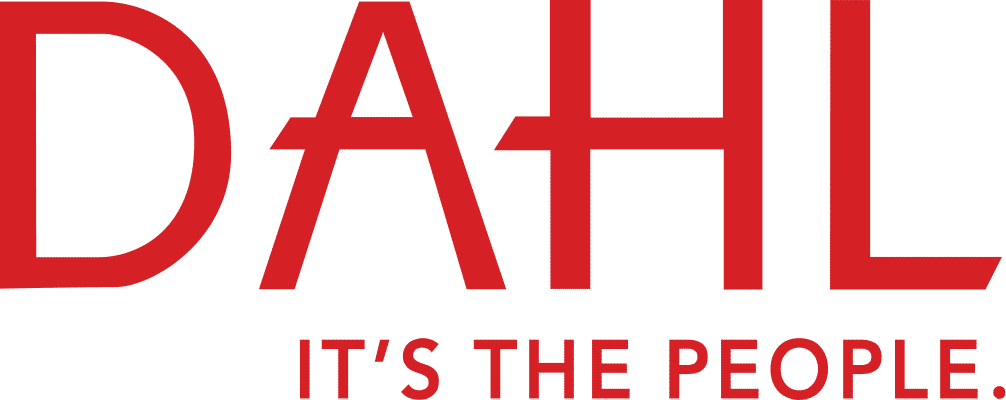Office spaces may seem relatively safe compared to industrial workplaces, but there are many serious accidents that can occur in an office setting. However, office environments can create unique risks that are important to be knowledgeable about so you can avoid getting injured.
Dahl Consulting prioritizes the safety and well-being of everyone we work with, which is why our employment experts share safety tips and best practices regularly. In this article, we will cover the prevalence of office impairments, common causes of workplace injuries and illnesses, and tips on how to avoid them.
Office Injuries & Illnesses
Each year, millions of nonfatal accidents occur in the workplace. According to the U.S. Bureau of Labor Statistics, there were 2.8 million nonfatal injuries and illnesses in 2022 alone. Non-fatal injuries at work are an unfortunate common occurrence. The Minnesota Department of Health provides the following examples of injuries and illnesses:
- Injuries: falls, burns, being stuck or crushed, fractures, electric shocks, cuts, amputations, needle sticks, and assaults
- Illnesses: contact dermatitis, asthma, some types of cancer, asbestosis, carpal tunnel syndrome, frostbite, and hearing loss
Interestingly, 90% of all workplace accidents are caused by unsafe behavior. The above injuries and illnesses may be alarming, but they can be prevented by simply acting in a safe manner and being aware of the best practices for keeping yourself and others safe in your workplace.
Common Causes of Injuries
Office workers are commonly injured by falls, fires, and electric shocks. Additionally, they may receive cuts and bruises from office tools and furniture. It is important that you are aware of the proper use of equipment and what items in your working environment may present a hazard to yourself or others. Next, we will cover what these hazards are and how to avoid them.
Tips to Avoid Injury & Illness
Hazard #1: Unsafe Work Practices
Unsafe work practices can result from a variety of different scenarios. Below are the best practices for avoiding injury from unsafe work practices.
- Ergonomics: Proper ergonomics are important to prevent repetitive movement injuries and straining. Make sure that you are sitting with your back and neck in alignment with proper back support, that your desk/workspace is the proper height, and that you are using proper typing and mouse-use techniques.
- Regular Breaks: Regular breaks are important for every worker, but it is especially important when doing work that may be considered strenuous. Make sure to stay hydrated and cool to prevent overexertion.
- Broken or Low-functioning Equipment: It is important to not use equipment that is damaged or not functioning properly, as it may result in cuts, electrical shocks, or other injuries, depending on the equipment. It is also important to properly store sharp instruments such as scissors, paper knives, and letter openers.
- Improper Lifting Techniques: Use safe lifting techniques. It is just as easy to receive a back injury in an office as it is in a warehouse. To pick up a heavy item, squat down beside it. Use the strength in your legs, not your back, to raise it up, bending your knees, not your back.
Hazard #2: Unsafe Environments
Sometimes, workplace injuries are not a direct result of an employee’s actions, but rather, the result of an unsafe work environment. Here is how you can prevent falling victim to an unsafe environment at work.
- Lighting: Well-lit workspaces are important to prevent trips and falls. Make sure that you are able to see what you are doing at all times to prevent injury.
- Flooring: Watch for obstructions that can cause tripping accidents, such as cords and cables, which should not be placed across traffic areas. Spills or messes should be cleaned up immediately to prevent slips.
- Stray Materials: All materials should be stored in the designated storage areas, not left in boxes that could be tripped on. Additionally, drawers and cabinets should be closed immediately after you have grabbed the materials you need.
Hazard #3: Lack of Emergency Preparedness
It is of utmost importance for everyone in an organization to know what to do in case of an emergency. There are a few key areas that you should review if you do not know the procedures for the following scenarios.
- Emergency exits, evacuations, and protocol: You should be familiar with the location of exits in your area to evacuate if needed for emergencies like fires or intruders. Additionally, you should be aware of the protocol in cases of lockdowns or weather emergencies.
- First aid: Being comfortable with basic first aid can be lifesaving. Knowing the locations of first aid kits and AEDs, if applicable, is critical knowledge.
Hazard #4: Technology Risks
Technology is in nearly every work environment in some capacity, and it can pose risks if not maintained and used properly. Below are ways that you can prevent being injured due to a technological malfunction.
- Proper cable management: Don’t overload electrical circuits. Extension cords are meant to be used only temporarily, so make sure the area is wired adequately for all of the electronic equipment such as computers, copiers, and printers. Breakers that trip frequently are a sign of overloaded circuits.
- Damaged electrical equipment: Cords that are frayed or damaged should not be used, as they are hazards for fires and electrocution. Similarly, computers or screens that are malfunctioning should not be used.
Hazard #5: Lack of Leadership & Training
Management is responsible for informing their employees of safety protocols and providing a safe working environment. Here is what you should expect from employers when it comes to leadership and safety training.
- Regular Inspections: Safety teams should conduct regular inspections to ensure proper safety techniques and safe working environments. These inspections can help to identify and promptly address potential workplace hazards.
- Opportunities for Employee Feedback: There should be an open dialogue between employees, managers, and safety professionals to report and address safety concerns.
In conclusion, knowing common workplace injuries and illnesses, and how to avoid them can help to keep you and your team members safe in nearly any setting. Employees share responsibility with employers to maintain a secure and healthy work environment.
At Dahl Consulting, we want to ensure the best possible workplaces for our direct employees, contingent workers, and valued business partners. We not only share articles with a variety of safety-related work tips but also valuable industry insights and information for both job seekers and employers. Visit our blog to learn more, or reach out to one of our employment experts today!




